White-eyed cicada from Serena Cochrane of Gerald, MO. Brood XIX. 2011.

White-eyed cicada from Serena Cochrane of Gerald, MO. Brood XIX. 2011.

White-eyed Magicicada from Meagan Lang of Nashville, TN. Brood XIX. 2011.
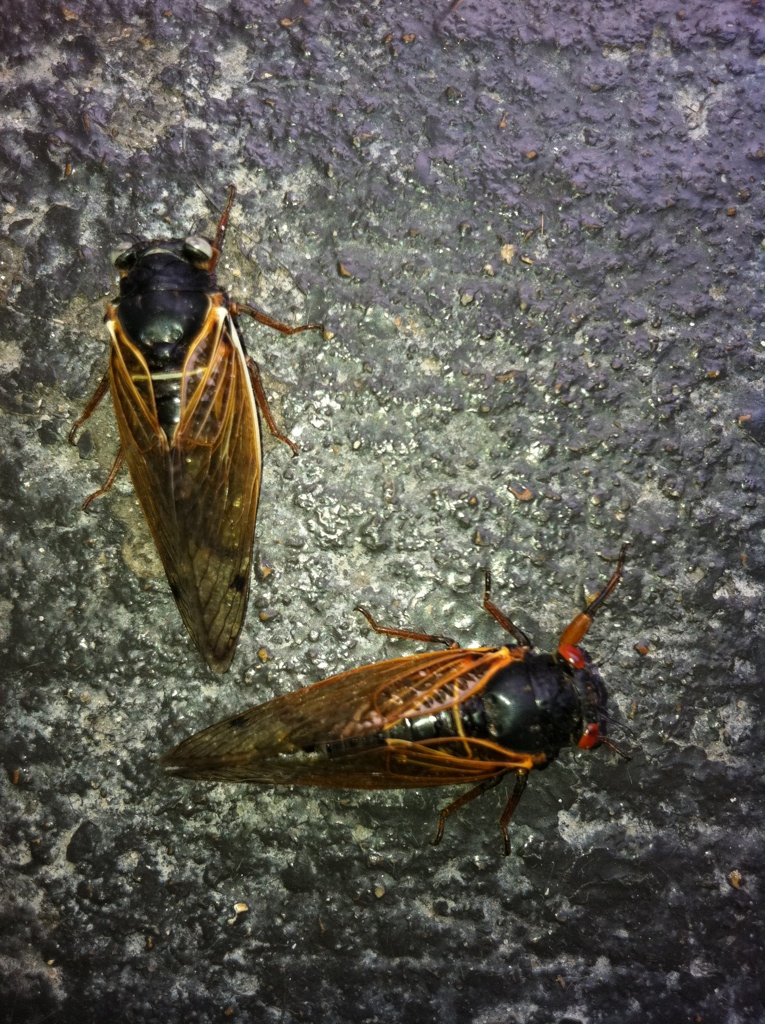




White eyed Magicicada from Joey Simmons of Nashville, TN. Brood XIX. 2011.
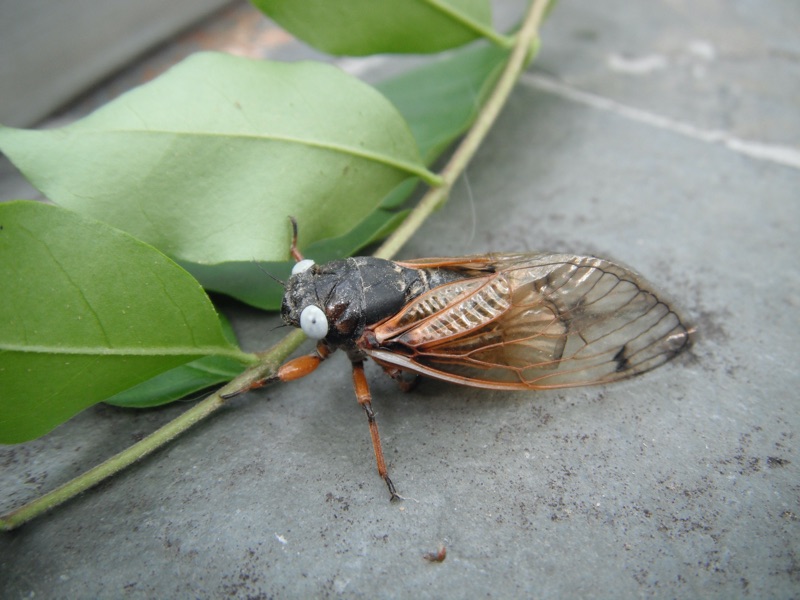
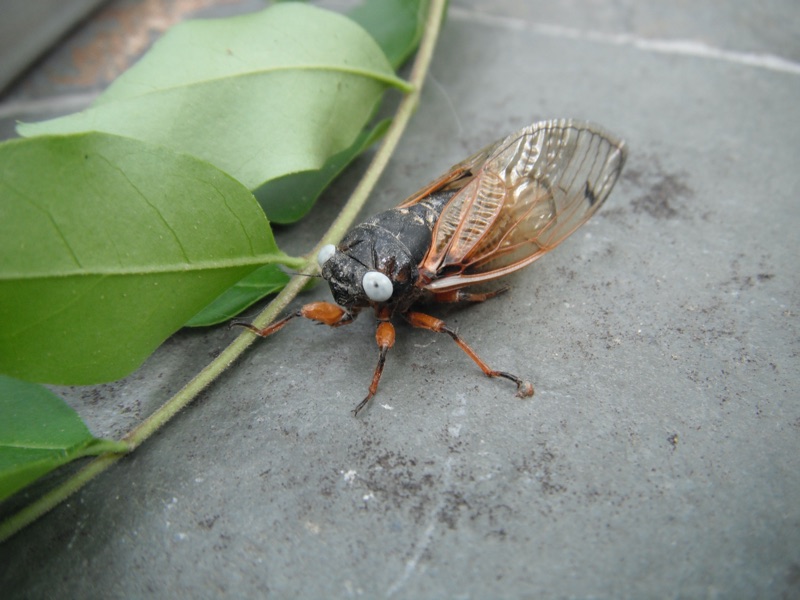
Brood XIX Magicicada tredecassini photos from North Eastern Arkansas taken by David Green. 2011.


Black-eyed Magicicada by Hester Bass. Brood XIX. 2011.
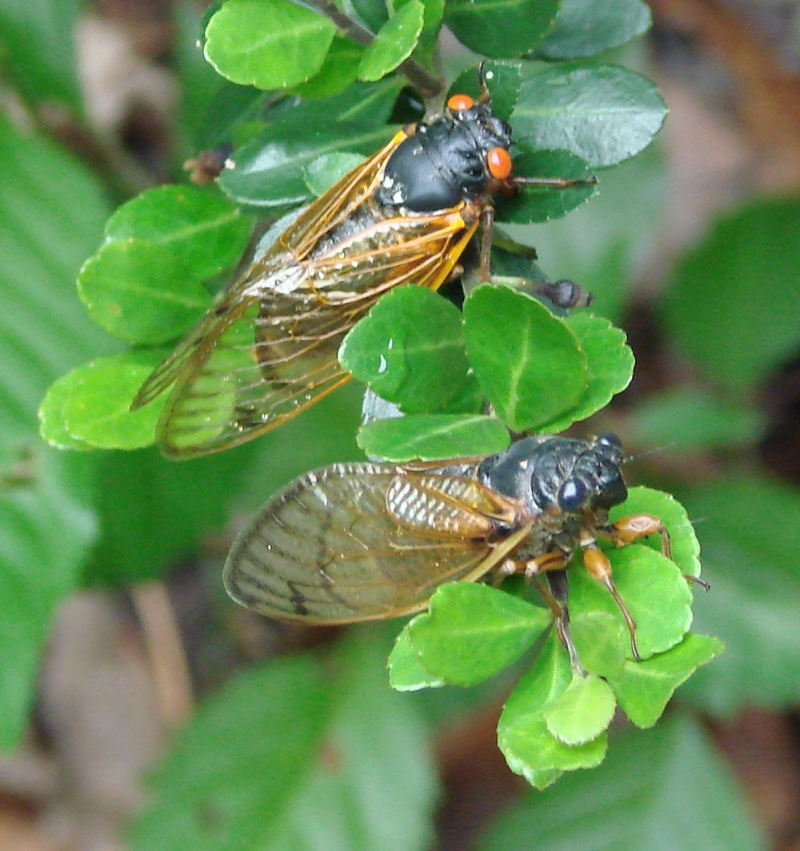
Magicicada tredecassini by Lenny Lampel Natural Resources Coordinator Mecklenburg County Park and Recreation Charlotte, NC. 2010.
Magicicada tredecassini (abdomen), Lower McAlpine Greenway 051010 (by Lenny Lampel):

Magicicada tredecassini, Lower McAlpine Greenway 051010 (by Lenny Lampel):

Magicicada tredecassini exuvia, Lower McAlpine Greenway 051010 (by Lenny Lampel):

Magicicada tredecassini exuvia on spicebush, Lower McAlpine Greenway 051010 (by Lenny Lampel):

Brood XIX (19) periodical cicadas emerged in the spring of 2024 in Alabama, Arkansas, Georgia, Illinois, Indiana, Kentucky, Louisiana, Missouri, Mississippi, North Carolina, Oklahoma, South Carolina, Tennessee, and Virginia. Rotten, but not forgotten, Brood XIX will be back in 2037. Relive the memories: Gene Kritsky released a new book. See what people found iNaturalist: Flagging (Brown Leaves), Brood XIX, Massospora, and Blue and White eyes. Buy a shirt. Yes, Brood XIII also emerged in 2024, but they did not overlap but came close in the Springfield, Illinois area.
What, when, where, and why:
What:
Millions of these cicadas:
Brood XIX has a 13-year cycle. It is interesting because it features both Magicicada neotredecim and Magicicada tredecim. These cicadas are very similar in song and appearance, but in areas where they overlap, Magicicada neotredecim alters its song to a higher pitch, which allows female cicadas to determine the species of their prospective mates. Visit Cicadas @ UCONN for more info on this behavior.
M. tredecim also have more orange on their abdomen than M. neotredecim.
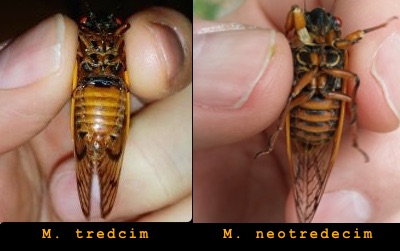
When: Typically beginning in mid-May and ending in late June. These cicadas will begin to emerge approximately when the soil 8 inches beneath the ground reaches 64 degrees Fahrenheit. A nice, warm rain will often trigger an emergence.
Other tips: these cicadas will emerge after the trees have grown leaves, and, by my own observation, around the same time Iris flowers bloom.
Where:
View the live maps on iNaturalist.
More Location Tips:
Why: Why do they stay underground for 13 years? The prevailing research suggests they’ve evolved a long, 13-year lifecycle allowing them to avoid predators that would sync up with their lifecycle & emergence. Why are there so many?! Research suggests that their huge numbers allow them to overwhelm predators, so enough of them will live on to breed and perpetuate the brood.
More facts and fun:
See a modern map or the Live Map from the Cicada Safari app.

What happened in 2011? Here’s some old blog posts with comments:
What happened in 1998? Here’s our message board from then:
When is a 2012 Magicicada not a Brood I cicada? When it’s a straggler.
A straggler is a periodical cicada that emerges in a year before or after the year they are supposed to emerge. Typically a straggler will emerge one or four years before, or one year after the year they should have emerged. Stragglers from Broods II (due 2013), Brood V (due 2016) and Brood XIX (backin 2011) are or will emerge this year in limited numbers.
Brood II is set to emerge next year in most of central Virginia (as well as CT, MD, NC, NJ, NY, PA), Brood V will emerge in four years in Virginia and West Virginia (as well as OH, PA), and Brood XIX emerged last year in a few areas of Virginia (as well as AL, AR, GA, IL, IN, KY, MO, MS, NC, OK, SC, TN).
Stragglers present a challenge for people tracking the Brood I emergence because Brood II, Brood V and Brood XIX stragglers will emerge in the same states as Brood I cicadas. Brood II and Brood V overlap Brood I in some places.
Here is a comparison of the I,II & V Broods. The black dots represent where the cicadas have emerged historically.

Here’s a map of Brood XIX in case you are curious:

Visit Cicadas @ UCONN (formerly Magicicada.org) for more information on this phenomena, and report your cicada sightings while you’re there. Credit goes to the Cicadas @ UCONN (formerly Magicicada.org)’s Facebook post that reminded me of the stragglers.
You can see the latest 500 cicada sightings on magicicada.org. Visit their “2011 Brood XIX sightings” map. The latest reports are from Illinois and Missouri.
The latest Science Cabaret Podcast is about cicadas, and in particular, the relationship of birds and cicadas. The podcast features Dr. Walt Koenig and is hosted by Dr. Holly.
I enjoyed this blog post Kingdom of the Cicadas. It features photos and videos of the emergence from Joplin, Missouri.
There were a lot of news stories about Sparky’s Ice Cream shop in Columbia, Missouri, and their cicada ice cream. After reading dozens of articles, it seems that they only made one batch, and the local health official(s) only advised them not to make the ice cream, but did not specifically or legally stop them from making it.
Related… cicada pie, pizza and tacos courtesy of the University of Maryland’s PDF cookbook. The cookbook is circa 2004 (Brood X) but they still work.